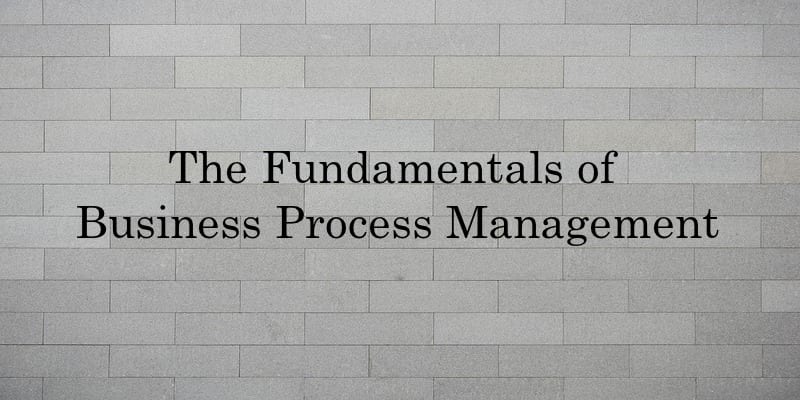The Fundamentals of Business Process Management


Business Process Management (BPM) is defined as the the systematic process of making an organization’s workflow more efficient, effective, and adaptable to changes in the business environment. In this way, BPM helps to reduce mistakes and miscommunication – a very common occurrence in many organizations. BPM software, on the other hand, is a technology solution which enables businesses to design, analyze, execute, monitor and optimize important processes.
What is BPM?
Some see it as a valuable automation tool for enterprises to generate a competitive advantage through cost reduction, increased agility, process excellence, and continuous process improvement. BPM strategies seek to implement process automation initiatives driven by human processes to improve operations throughout an entire organization. Focusing on the operations themselves, BPM uses a four step method to create better process management to improve performance:
- documenting any existing processes and keeping records of each step from start to finish
- identifying performance statistics/metrics and using the findings as the base for continuous process improvement
- once identified, improving quality and efficiency in the process for the desired outcome
- managing the process through a flow of information such as actions and related activities
Business process management incorporates Continuous Process Improvement (CPI) methodologies, such as Lean and Six Sigma, and uses them in conjunction with BPM software to optimize business processes. In this way, BPM can act as the catalyst to accelerate the application of Lean and Six Sigma methodologies and can increase organizational efficiency and profitability by enhancing business processes with three important elements – agility, visibility and efficiency.
How Does BPM Help You?
BPM software also helps to reduce human error, miscommunication and, at its highest level, combines software and IT aspects with best management practices to address structural issues in an organization. The importance of BPM software should not be overlooked.
According to Lionel Valdellon, content marketing manager for Wrike, governing the usage of technology and software are the methodologies for managing business process flows. This is an entire industry that has grown up around educating teams and implementing frameworks for improving BPM in companies. The frameworks include:
- Lean – a methodology that focuses on cutting out all waste in processes. Lean seeks to create more value for customers while using fewer resources.
- Six Sigma – a quantifiable method for continuous process improvement that improves processes by measuring defects and eliminating them.
- TQM – (Total Quality Management) a method to improve products and services via continuous feedback.
- Lean Six Sigma – a hybrid method that eliminates waste so that processes are highly efficient, cost effective, and meet customers’ needs.
Taking a Closer Look at Lean Six Sigma
As a combination of two powerful process improvement methods: Lean and Six Sigma, this practice has the ability to remove any waste or redundancy from a process. Unlike BPM, Lean Six Sigma approaches business processes from an analytical point of view and aims at improving an organization’s overall customer satisfaction. Incorporating a five step method, Lean Six Sigma practices include:
- defining/mapping any and all problems in a process
- measuring problems by collecting data and calculating/displaying variance in the process
- analyzing the identified problem causes, narrowing down the root causes and determining an appropriate outcome for improvement
- improving the process by seeking alternative solutions – engage in testing, refining, implementing or justifying all possible solutions
- controlling process improvements by preparing a process control plan and implementing a new solution for maintaining project completion
Combine the two, BPM and Lean Six Sigma, and you have one giant powerhouse helping run your operations. The strengths of both practices compliment each other and can create a harmony that instills your entire business with a focus on operation quality and performance.
Looking for more? Download our Business Process Management Buyer’s Guide for free to compare the top-24 products available on the market with full page vendor profiles. The guide includes four key capabilities to look for in a BPM platform, plus questions to ask before purchasing. It’s truly the perfect resource for anyone looking to find the right BPM for their business/organization, or those looking to replace an existing one.
And don’t forget to follow us on Twitter, LinkedIn and Facebook for all the latest in Work Tech!
























